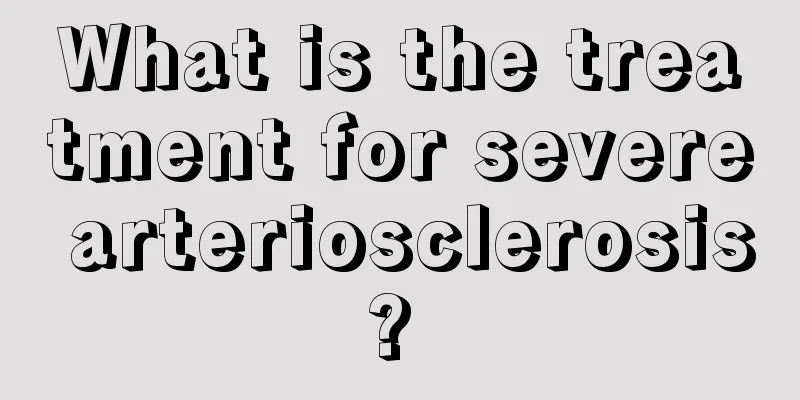What is the reason for dry, itchy and painful corners of the eyes

|
Dry and itchy eyes are a problem that many people have. If the dry and itchy eyes are not caused by allergies, then it is very likely that the patient suffers from an eye disease such as dacryocystitis. Although the incidence of dacryocystitis is not too high, its impact on patients cannot be underestimated. Next, I will introduce the causes, clinical manifestations and treatments of dacryocystitis. 1. Causes of the disease The exact cause has not yet been determined. Dacryocystitis is often secondary to inflammation of adjacent tissues, such as the conjunctiva, nasal cavity and paranasal sinuses, or some special infections such as tuberculosis or syphilis. For those that originate in the lacrimal duct system, the cause is unclear. 2. Clinical manifestations 1. Acute dacryocystitis Generally, the skin in the lacrimal sac area at the root of the nose will appear red, swollen, hot, and painful, and even the face on the same side will swell, sometimes accompanied by enlargement and tenderness of the preauricular and submandibular lymph nodes, tears in the eyes, and purulent secretions from the lacrimal puncta. When the abscess is localized, it can break through the skin surface. Most patients usually have a history of chronic dacryocystitis. 2. Chronic dacryocystitis It is often manifested as tearing and excessive eye secretions. When squeezing the affected lacrimal sac area, a large amount of purulent or serous secretions can be seen gushing out from the lacrimal puncta, and the affected tear duct cannot be flushed smoothly. 3. Treatment Methods 1. Medication Use various antibiotic eye drops topically, 3 to 4 times a day. Squeeze and empty the lacrimal sac secretions before dropping the medicine so that the medicine can be absorbed into the lacrimal sac. Use sulfonamides or antibiotics systemically to eliminate purulent secretions, but cannot relieve blockage and retention as a preparation before surgery. 2. Flushing the tear duct In order to completely remove purulent or mucous secretions, the lacrimal sac can be flushed with normal saline, and then 0.3 to 0.5 ml of antibiotics can be injected. Flushing with a mixture of antibiotics, corticosteroids and cellulose-soluble fluid can have a better effect on early blockages without fixed scars. 3. Lacrimal duct intubation For patients whose obstruction is in the nasolacrimal duct, tear duct intubation surgery can be considered. First, the tear duct is explored, then the tear duct is dilated and the tear duct is inserted. 4. Dacryocystorhinostomy The local nasal mucosa and lacrimal sac are surgically anastomosed together to create a channel for draining tears. 5. Lacrimal cystectomy The indication should be selected according to the situation: patients with atrophic rhinitis, lupus, tuberculosis, syphilis, inflammation of the tissues around the lacrimal sac or purulent inflammation of the ethmoid sinus, malignant tumors, corneal inflammation, endophthalmitis, ocular trauma, etc. should first consider lacrimal sac removal. |
<<: What is the reason for dryness and pain in the nasal cavity
>>: How to get rid of athlete's foot and treat sweaty and smelly feet
Recommend
Is purpura serious?
Purpura is a health problem that troubles many pe...
What are the foods with a low glycemic index
For people with high blood sugar, foods with a hi...
Why does it hurt above my right buttock?
The upper part of the buttocks is also our most d...
More exercise is better than taking medicine to treat brain cancer
Many brain cancer patients become depressed becau...
Symptoms after bladder cancer surgery
Bladder cancer is the most common malignant tumor...
Three major symptoms help you detect gallbladder cancer early
The symptoms of gallbladder cancer are now appear...
What is the use of expired soy sauce
Soy sauce is a very common ingredient in househol...
Is drinking vinegar useful for fish bones
When eating fish, the most worrying problem is th...
Let us give you a detailed analysis of the causes of skin cancer
Among the many cancer diseases, skin cancer is on...
My stomach hurts so much, what's going on?
In our daily lives, we often feel unwell occasion...
Oral lichen planus
The surface of the human oral cavity is covered w...
Is there any hope for nasopharyngeal carcinoma that has metastasized to the liver after chemotherapy and radiotherapy in the middle and late stages?
Is there any hope for nasopharyngeal carcinoma th...
What is the reason for itchy red bumps all over the body
There are many reasons for itching and the appear...
How can you make your teeth whiter?
There are many different colors of teeth, but the...
What should I do if my child is infected with both viruses and bacteria?
A child's body is in a developmental stage du...









